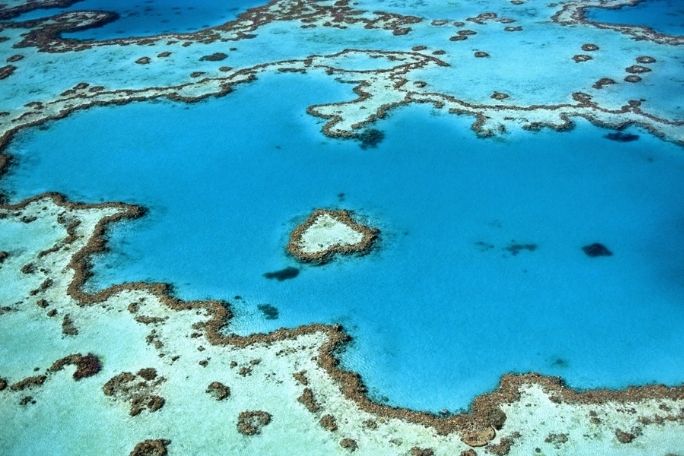Lesson summary
Students explore how nature makes them feel, the Australian places in nature that they love, and how these places might be affected by climate change. Students begin this lesson by participating in a vocabulary exercise about words such as ‘awe’, ‘astound’, ‘marvel’ and ‘inspire’. They then spend time outside in nature, and use a ‘Rake thinking tool’ to investigate how they experience nature and connect to it emotionally.
Using images collected before the activity, students create a collage and supporting presentation to share the places they love in Australia with classmates. Students will then look at how these places might be affected by climate change. Finally, students will create a postcard to encourage their local community to participate in Earth Hour.
Essential questions:
- Why do we need to value our environment?
- How do people and environments influence one another?
- How do people influence the human characteristics of places and the management of spaces within them?
- How do people’s connections to places affect their perception of them?
Lesson guides and printables
Curriculum links
Select your curriculum from the options below.
Lesson details
Curriculum mapping
Australian Curriculum content descriptions:
Year 5 HASS:
- The influence of people, including Aboriginal and Torres Strait Islander Peoples, on the environmental characteristics of Australian places (ACHASSK112)
- The environmental and human influences on the location and characteristics of a place and the management of spaces within them (ACHASSK113)
Year 5 English:
- Understand the use of vocabulary to express greater precision of meaning, and know that words can have different meanings in different contexts (ACELA1512)
- Plan, draft and publish imaginative, informative and persuasive print and multimodal texts, choosing text structures, language features, images and sound appropriate to purpose and audience (ACELY1704)
Year 6 HASS:
- The effects that people’s connections with, and proximity to, places throughout the world have on shaping their awareness and opinion of those places (ACHASSK142)
Year 6 English:
- Investigate how vocabulary choices, including evaluative language can express shades of meaning, feeling and opinion (ACELA1525)
- Plan, draft and publish imaginative, informative and persuasive texts, choosing and experimenting with text structures, language features, images and digital resources appropriate to purpose and audience (ACELY1714)
NSW syllabus outcomes: EN4-6C, EN4-4B
General capabilities: Literacy, Critical and Creative Thinking, Personal and Social Capability.
Cross-curriculum priority: Sustainability OI.6, OI.7, OI.9.
Relevant parts of Year 5 HASS achievement standards:
Students identify and describe the interconnections between people and the human and environmental characteristics of places, and between components of environments.
Relevant parts of Year 5 English achievement standards:
Students encounter and decode unfamiliar words using phonic, grammatical, semantic and contextual knowledge. They create imaginative, informative and persuasive texts for different purposes and audiences, and make presentations which include multimodal elements for defined purposes.
Relevant parts of Year 6 HASS achievement standards:
Students describe how people, places, communities and environments are diverse and interconnected.
Relevant parts of Year 6 English achievement standards:
Students create detailed texts elaborating on key ideas for a range of purposes and audiences, and make presentations using a variety of strategies for effect.
Unit of work: Earth Hour – Primary.
Time required: 60 mins x 2.
Level of teacher scaffolding: Medium – oversee activities and facilitate discussions.
Resources required
- Student Worksheet – one copy per student OR computers/tablets to access the online worksheet
- Device capable of presenting a website to the class
- One copy of Rake thinking tool worksheet for each student. Cameras (phones or tablets are OK)
- One printed postcard template for each student: Earth Hour Blank Postcard Template and postcard making materials (paper, pens, etc).
Skills
This lesson is designed to build students’ competencies in the following skills:
- Critical thinking
- Communication
- Creativity
- Social Skills
- Community engagement
- Problem solving
- Global citizenship
Additional info
This lesson has been created in partnership with WWF-Australia. Earth Hour is the world’s largest community-driven climate change campaign. At the centre of Earth Hour is switching off lights to show a commitment to taking action.
Thousands of teachers use Earth Hour’s education program to enrich their curriculum and provide pathways for young people to create change in their world.
For the most up to date Earth Hour dates, times, and events, check here.


Welcome back!
Don't have an account yet?
Log in with:
Create your free Cool.org account.
Many of our resources are free, with an option to upgrade to Cool+ for premium content.
Already have an account?
Sign up with:
By signing up you accept Cool.org's Terms and Conditions(Opens in new tab) and Privacy Policy(Opens in new tab).